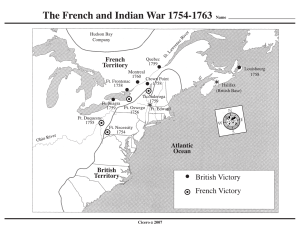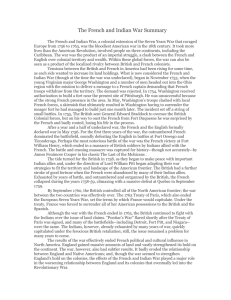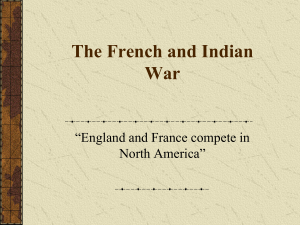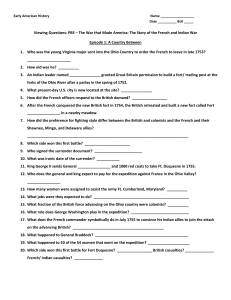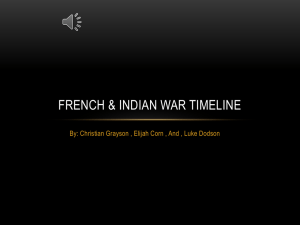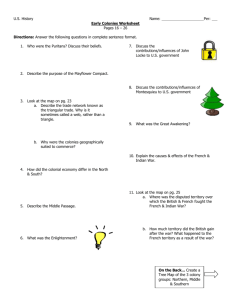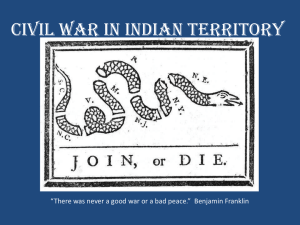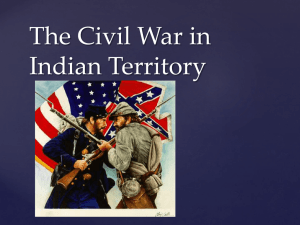The French and Indian War
advertisement
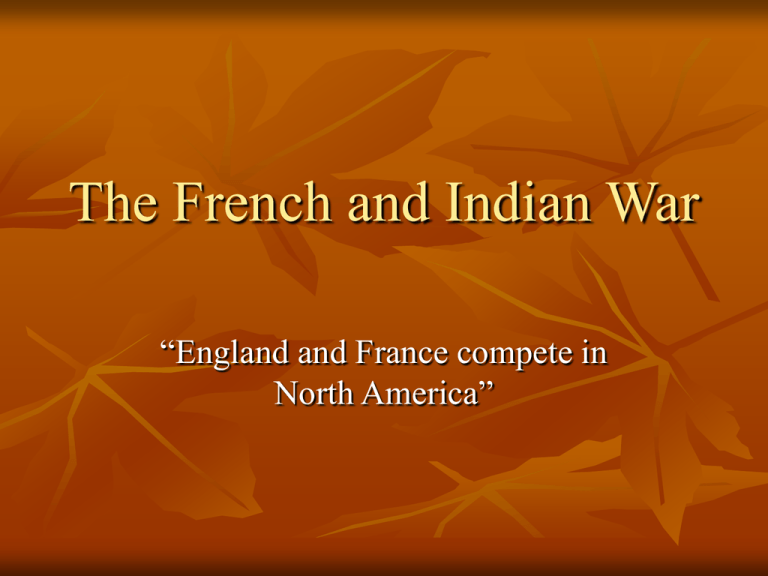
The French and Indian War “England and France compete in North America” French and English Fight 1756-1763 The “French and Indian War”, was the bloodiest American war in the 1700’s. It took more lives than the American Revolution, involved people on three continents, including the Caribbean Islands. England France The war was fought in North America between the French and English over colonial territory and natural resources. Each country wanted to gain more land. In the 1740s, both England and France traded for furs with the Native Americans in the Ohio Territory. By the 1750s, English colonists hoped to change the wilderness into good farmland. Each side tried to keep the other out of the Ohio Territory. In the early 1750s, French soldiers captured several English trading posts and built a fort to defend their territory from the English. The “French and Indian War” began in 1753, when a young Virginian, Major George Washington, and a number of men headed out into the Ohio lands to deliver a message to a French Captain demanding that French troops leave the territory. The demand was rejected by the French. In 1754, George Washington and a small force of Virginia militiamen marched to the Ohio Country to drive the French out. Washington hoped to capture the fort but soon realized the fort was too strong. He retreated and built Fort Necessity. He also hoped to convince Native Americans that England was stronger than France. He wanted them to fight with the British. French soldiers and their native allies captured Fort Necessity on July 3, 1754, marking the start of the “French and Indian War” in North America. The French permitted Washington and his men to return to Virginia safely, but made them promise they would not build another fort west of the Appalachian Mountains for at least a year. England did not officially declare war until 1756, although the fighting had actually begun two years earlier at Fort Necessity. After a year and a half of undeclared war, the French and the English formally declared war in May 1756. For the first three years of the war, the French won most of the battles. Things changed in 1758 The English and Indians became allies. The English began to fight like the Indians. The French were abandoned by many of their Indian allies. The French became exhausted by years of battle, outnumbered and outgunned by the British, the French collapsed during the years 1758-59, climaxing with a massive defeat at Quebec in September 1759. The End of One War Leads to a New War By September 1760, the British controlled all of the North American frontier; the war between the two countries was effectively over. The 1763 Treaty of Paris, also ended the European “Seven Years War”. Under the treaty, France was forced to surrender all of her American possessions to the British. North America 1763: The Effects France lost all of its land in America. England gained a huge amount of land in America. France lost the fur trade business with the Indians. The Indians began to fight the English and the colonists for taking their land away. Relationship between England and its 13 colonies eventually led into the Revolutionary War. George Washington He was only 20 years old and he was an officer in the Virginia Militia. He fought for the British against the French and Native Americans in what we call the French and Indian War. Treaty of Paris 1763 The Treaty that ended the French and Indian War. The British gained control over the area west of the 13 British Colonies all the way to the Mississippi River. The French agreed to give up any colonies in North America, including all of Canada. Since Spain had helped the French, the Spanish were also forced to give up Florida. But the Spanish still held their land west of the Mississippi River and in Central and South America.
